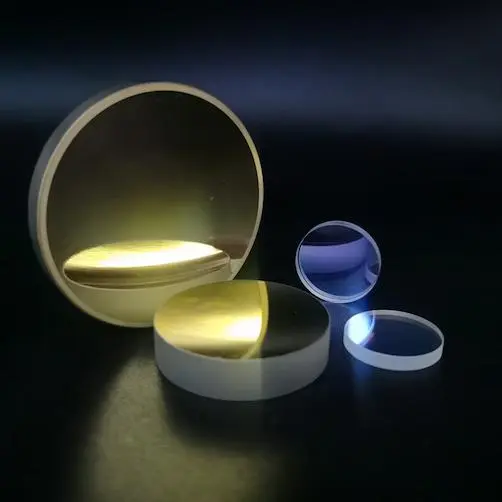
Diffractive optical elements (DOE) have recently emerged as a booming new type of optical element. The DOE usually adopts micro-nano etching technology to form a two-dimensional distribution of diffraction units. Each diffraction unit can have a specific shape, refractive index, etc., to finely control the phase distribution of the laser wavefront. After passing through each diffraction unit, the laser undergoes diffraction and interference at a certain distance (usually infinity or the lens focal plane), forming a specific light intensity distribution.
Since their introduction, diffractive optical elements have shown huge application potential in fields such as high-power lasers, laser processing, laser medical treatment, microscopy imaging, lidar, structured lighting, and laser display.
High efficiency
The precisely designed diffraction unit structure can ensure that nearly 100% of laser energy is projected onto the required pattern, and the efficiency is much higher than that of methods such as masks.
Convenient to use
Diffractive optical elements have a very small volume and weight, and can be used by inserting them into the optical path; in most cases, they can be used in conjunction with standard lenses, field lenses, microscopic lenses, etc.
Flexibility
Thanks to the development of micro-nano processing technology, DOE can be customized for different lasers or different target light intensity/phase distributions. At the same time, the optical path structure of DOE is very simple, and different geometric sizes of light spots can be achieved by using different lenses.

According to different uses, DOE can usually be divided into beam shaping, beam splitting, structured lighting, multi-focus, and other special beam producing categories; each category has different principles, designs, and application characteristics.
Generally, before choosing to use a DOE element, the following principles need to be noted:
The light beam produced by diffractive optical element cannot violate the laws of light propagation; the specific light intensity distribution constructed can only exist in a certain depth of field range. Therefore, in use, the required light spot shape, size, working distance, depth of field, etc., may not be able to be achieved simultaneously, and trade-offs need to be made.
Diffractive optical elements are usually designed based on the laser wavelength, beam aperture, beam mode (M2), and near-field intensity distribution. Therefore, these parameters need to be measured accurately before selecting, and the use of parameters that do not match the design parameters will result in poor or even unusable results.
Diffractive optical elements are sensitive to the angle of incident light and require high precision and stability of optical path adjustment.
Most diffractive optical elements precisely control the wavefront phase of the incident laser, so other components in the optical path, such as reflection/ transmission mirrors, lenses, etc., should use high-precision, low-wavefront error devices; otherwise, it will affect the final result.
Like conventional transmission optical elements, depending on the requirements of different wavelengths and laser intensities, diffractive optical elements can be made of infrared materials such as quartz, glass, gemstones, plastics and resins, ZnSe, etc., and can also be coated with anti-reflection films.
Click here for more knowledge about diffractive optical elements applications: https://www.tcoptik.com/diffractive-optical-elements-applications.html



